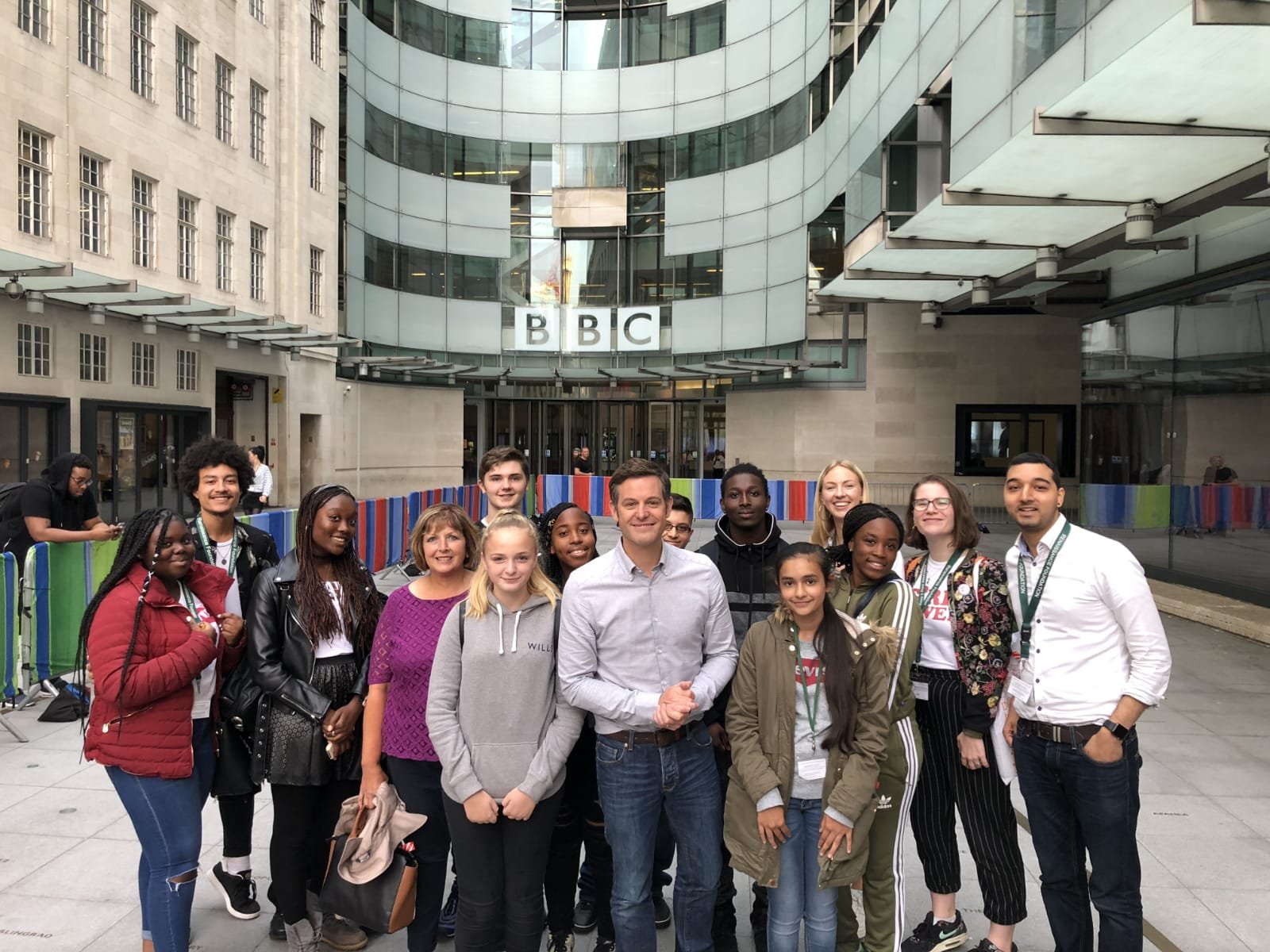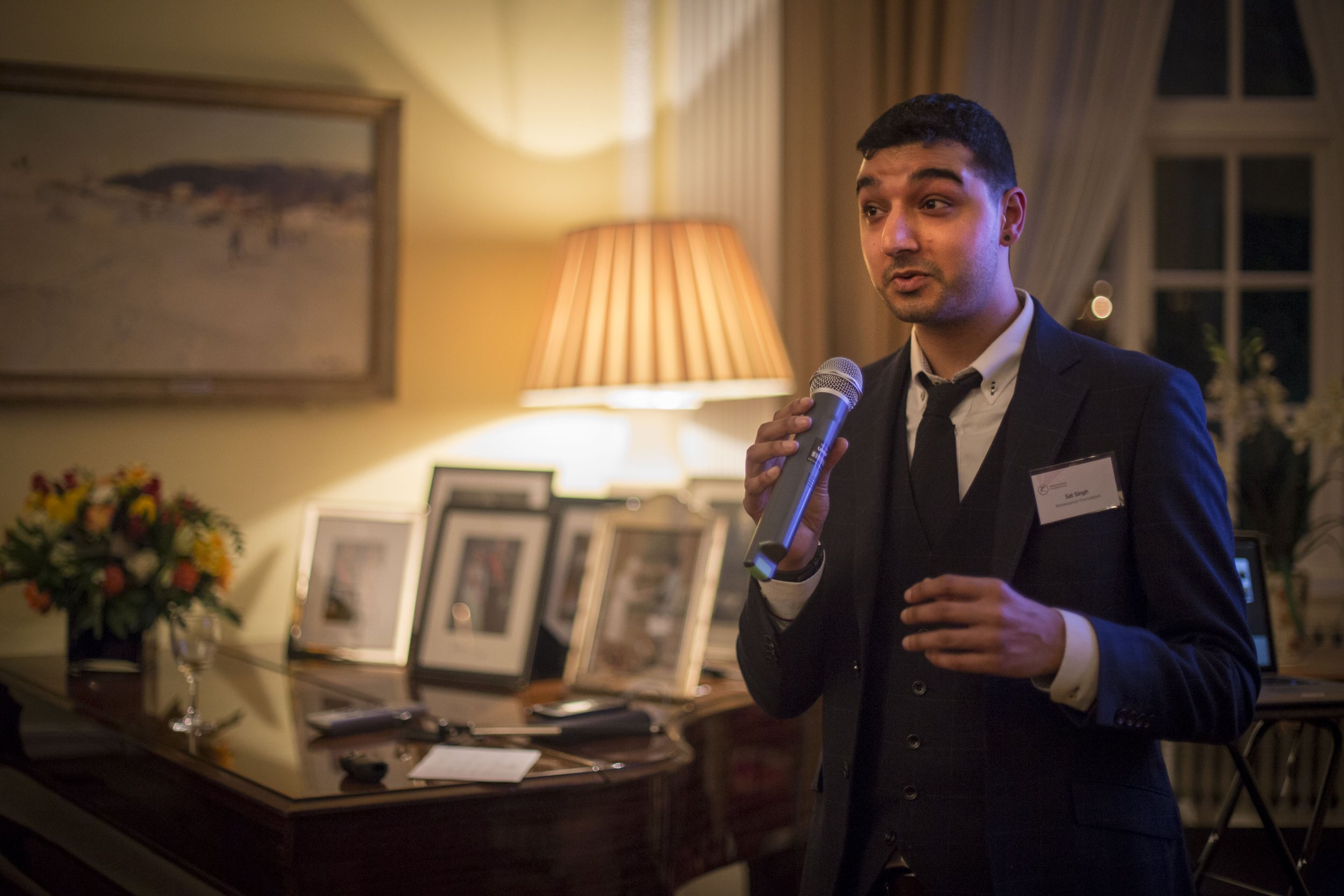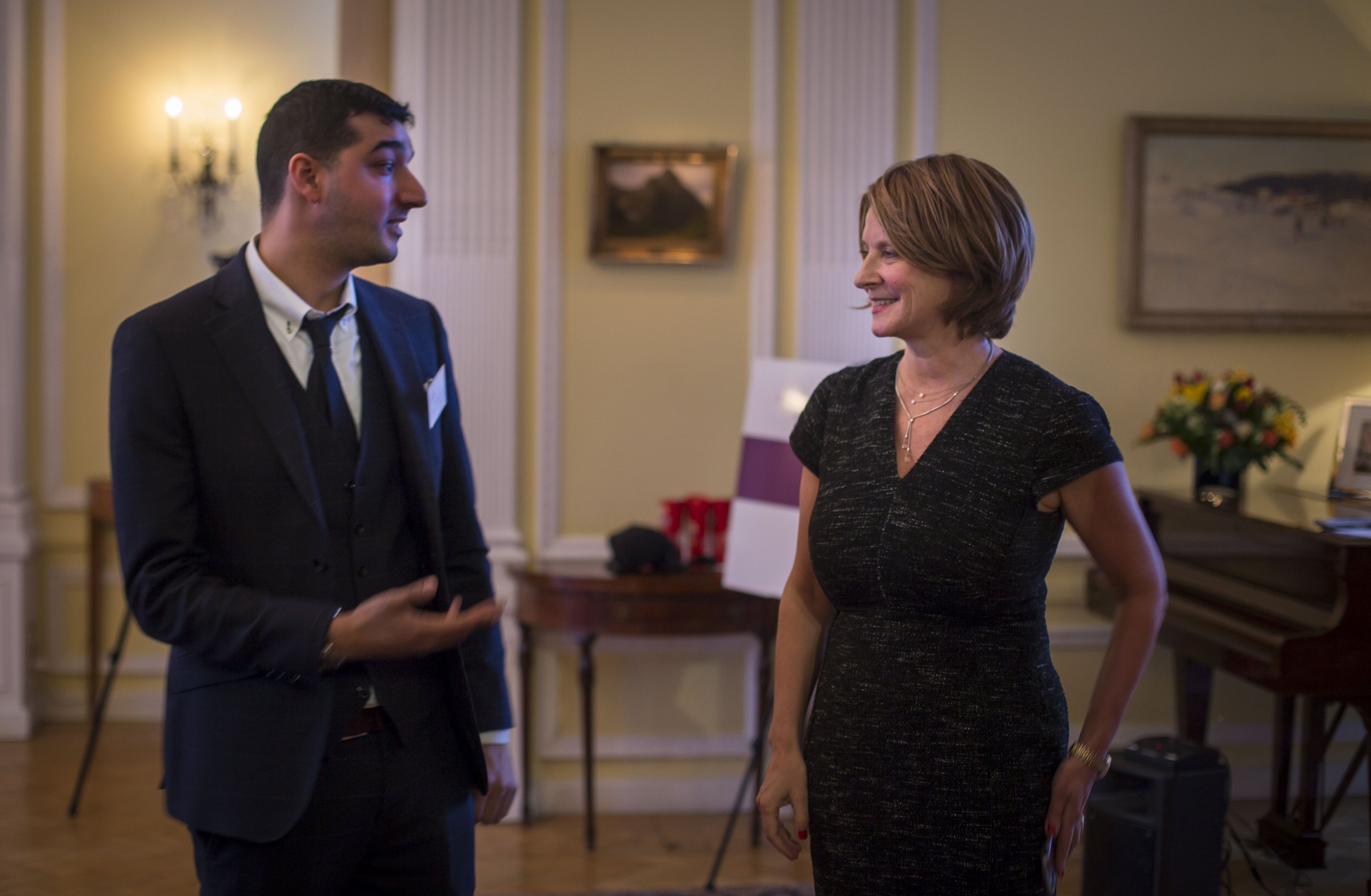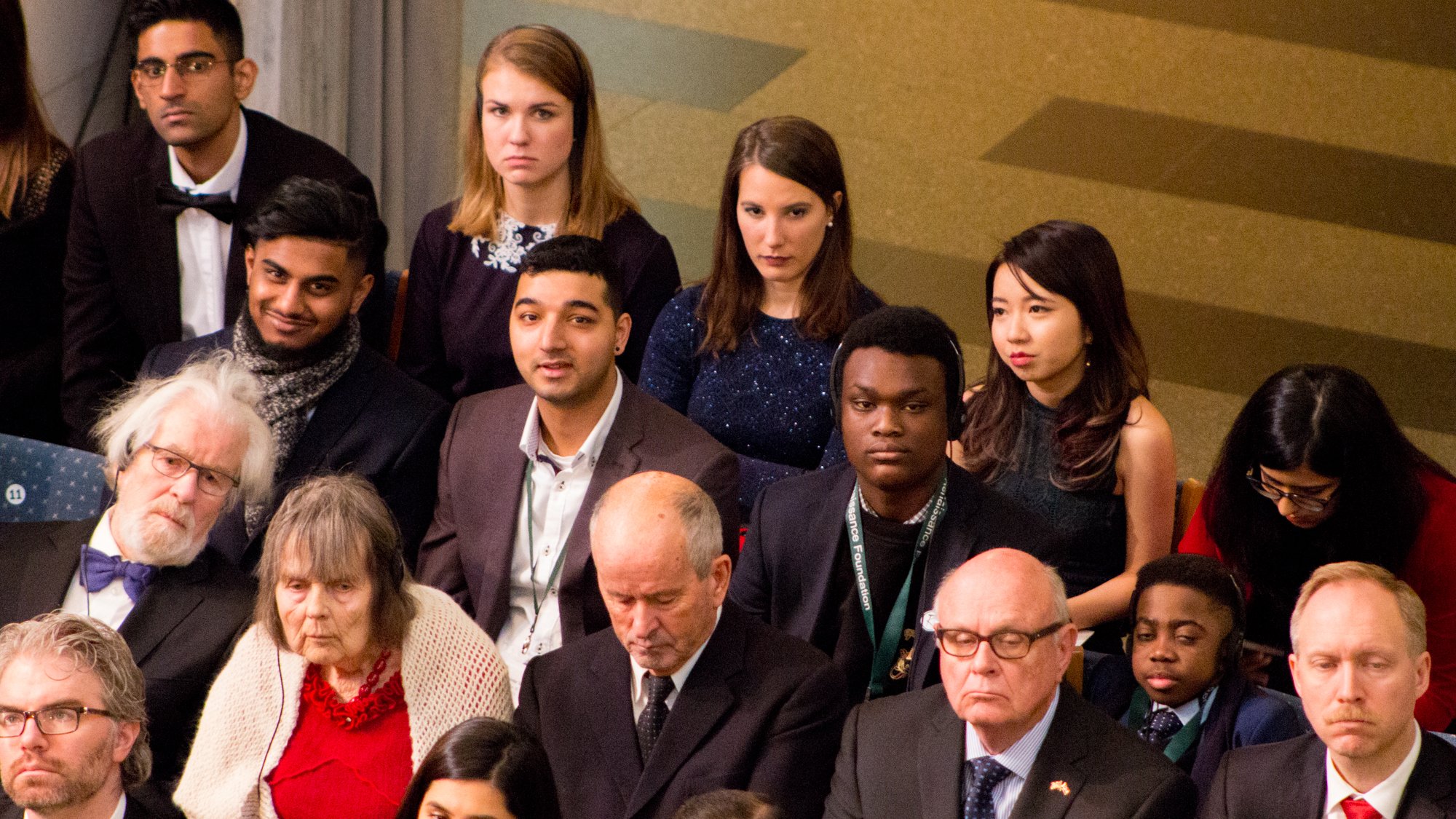The History of Renaissance Foundation
In this post, our founder and CEO Sat discusses the history of Renaissance Foundation, from its humble beginnings to the highs and lows of running a grassroots charity…
It’s in my nature to always look forwards, to figure out new ways for Renaissance Foundation to achieve its mission – so it’s easy to forget how far we’ve come since we started in 2006. You can find out more about why I started Renaissance Foundation and the first few encounters that convinced me to turn my passion into a charity, in one of our other blog posts: here.
As I mention in that post, it all started with a McDonalds. The first two people that inspired me were Tyrone – who talked my friends out of getting revenge on another group – and David, who worked at the BBC. He invited me and my friends to visit the Television Centre in White City, an experience that completely blew me away.
David was also the person who introduced me to the Prince’s Trust and YCTV (Youth Culture Television), which were the first stepping stones in a long line of people and businesses that have supported me over the years. I joined YCTV, an amazing youth charity set up by Sabrina Guiness. It gave me skills in film production, as I was hoping to make a documentary about my situation. I was there for a year – it was brilliant – but then the funding ran out.
I wasn’t sure what to do next, but I had a year’s worth of TV skills under my belt; being dyslexic, it gave me a practical skill I was good at, after not having done well at school. I was inspired by the stories of inspirational figures who had also faced challenges but achieved amazing things in their fields; my brother suggested using my filming skills to create new content and to interview these inspirational people.
I got funding for a camera from the Prince’s Trust and used it to film the interviews. I wanted to create a media source for young people to access and feel inspired – this was the first iteration of Renaissance Foundation. The media source quickly evolved into hosting workshops where I would show the interviews to a group of young people. The interview series was called ‘I Can Do It’.
You never know who you’re going to meet until you ask. We managed to do some filming at Wimbledon and I had a chance encounter with Richard Williams; father of tennis sisters Venus and Serena Williams. That was a huge moment. I got to know Richard very well; we kept in touch over the years and he got Venus and Serena involved with Renaissance Foundation. Once you’ve spoken to those kinds of role models who are the top of their game, it opens so many doors. We were able to meet Lewis Hamilton when he started at McLaren, in 2008 (before he’d won any world championships), and have had visited him at the British Grand Prix almost every year since.
Alongside starting the interview project, I still tried to go to university. I used Clearing to get in – because of my dyslexia I didn’t have the grades – and did photography, taking my student loan and using it to set up the charity. We registered in 2006, had two years as a not-for-profit and gained charitable status in 2008. It’s hard to believe that was sixteen years ago!
Once we had the interviews edited onto DVDs, we would sit the young people down in our ‘I Can Do It’ workshops. These first workshops were very different to the three-year programme we run now, but it was a great start. We ended up going to schools, care centres and hospitals with our DVDs; we got more funding from the Prince’s Trust… and then something amazing happened. We did an interview with a Nobel Prize winner Wongari Maathai. She kindly introduced me to the Nobel Institute in Norway. In 2005, I used my student loan to go to Oslo meet the Institute and attend the Nobel Peace Prize ceremony. By 2012, we were working with the Norwegian Embassy to fund whole groups to go to the Nobel Peace Prize and see the ceremony.
The only thing was, I still didn’t really know how to run a charity. I was jumping from funding to funding, trying my best with my limited experience as a twenty-year-old. I had a chance encounter with Alaistar, the CEO of the School for Social Entrepreneurs. He told me, “You are a social entrepreneur” and that SSE was for people like me, who were running social projects or who had founded charities but didn’t have the experience of running a business. It was while I was there that I realised, “Oh, actually, Renaissance Foundation is a proper organisation.”
I decided we needed an office and the School helped me set one up. We ended up working with VISA on a project during the build up to the London 2012 Olympics. The project gave us our first proper capital. We could pay our rent and we could build our capacity; this was combined with a significant grant from the local government and allowed us to take on a growing team of staff.
Looking back, I can see that I was building the foundations for what Renaissance Foundation would become. The only problem was, the austerity policy that came in affected our new funding and it was cut. We weren’t having the impact I wanted to have because we were only doing one-off workshops with large groups. There was no way to see whether the messages we shared were being instilled in the young people we worked with.
Fast forward to 2013: with the reduction in our funding, we started working more intensely with smaller groups. Historic Royal Palaces and the Tower of London commissioned us to make their first ever app for young people. We developed a successful programme around this that even involved a private viewing of the Crown Jewels! Despite what we were achieving with our projects, funding was running low, and how we were making funding work wasn’t very sophisticated. I was so used to forging on with nothing but a lean, grassroots mindset.
One of our contacts mentioned a large office opposite St Pauls Cathedral was available, without security of tenure. I thought, “Why not?” We went for the best office in the building: a super cool, huge open plan space. There were only four of us in the staff team at the time, but our request was granted and suddenly the office was ours.
We turned it into a youth centre – it was the best thing we ever did. We had a pool table, sofas, a massive space… and all the young people were able to drop in whenever they wanted. It gave me an understanding of how to run a youth centre, and how much people enjoyed having a space to come to. We invited speakers to our office, started engaging them with our young people… even the Bishop of London came in to talk to us!
We ended up being there for nearly four years, rent free. Then I got the email: we needed to be out by the end of the week. It was a huge shock; luckily, we had pro-bono legal support from Macfarlanes, which helped us argue for three more months in the space. It gave us the breathing room we needed to pack up and move.
But where to go? We found ourselves in a WeWork, which was much harder for the young people to come to as it wasn’t their own space. It also meant we were running through our funds rapidly… we were very close to the edge when Nigel – now our Chair of Trustees – got involved. He said to me, “If you want longevity, you’ve got to shrink”, so we did. We moved into a tiny office (it must have been the size of a broom cupboard) and kept going. We focused on making our programme more external, working with our partners and slowly rebuilding the way we delivered our programme with the new location limitations.
I don’t think anyone could have predicted what happened next. 2020: COVID 19 and lockdown. I don’t think I need to say much more about it – everyone will remember how tough that year was. However, I’d already been through the experience of losing our St Pauls office so in a weird sort of way, I knew that we could cope. We knew how to adapt because we’d done it so many times before.
Nigel and the Board of Trustees were a huge support; we shut down the office and moved everything online. In those early days of lockdown, we were getting around eighty people on our online sessions – because universities were shut, lots of the young people that had already completed our programme came back. We were all looking for some human connection.
It's hard to believe, when we talk about it now, that there was a period of time where you couldn’t leave your house. But somehow, we made it work; we launched a podcast, continued inviting speakers and individuals to chat with us online - some of our speakers included British Olympian Ade Adepatan and Barack Obama’s National Security Advisor, Ben Rhodes. We had weekly check ins for our young people. Corey physically took laptops to people who didn’t have them to make sure they could stay connected to us.
We stayed online, incorporating a co-working space for in-person sessions and focusing our programme on external visits, until September 2023 – which was when we moved into the Hub, our current office and space in Aldgate. A huge thank you to Overbury construction for the renovation of our new space, and to the many supporters who came together to make it possible and get us moved in!
The change has been massive; I feel like Renaissance Foundation has always had a piece of this or a piece of that, but never everything together. Now, we do. We’ve got the space, we’ve got the team, we’ve got an incredible programme. This is our chance to spread our roots and grow.
It's been a rollercoaster of a journey to get here, but I can confidently say we have the skills and tools we need to make a huge impact in the lives of the young people we support. Seeing the impact that our programme has had on the young people that join us, the positive changes that happen in our young peoples lives, is what makes this so meaningful to me. Our young people have overcome so many challenges and have gone on to do amazing things - our graduates include professional chefs, accountants, and we've had our first Oxford University graduate too.
Renaissance Foundation has always been a small charity with big goals, and though we’ve been lucky, it’s been a combination of loads of hard work and the support of an amazing community. We’ve got two more years until our twentieth anniversary: I can’t wait to see where we go next.




